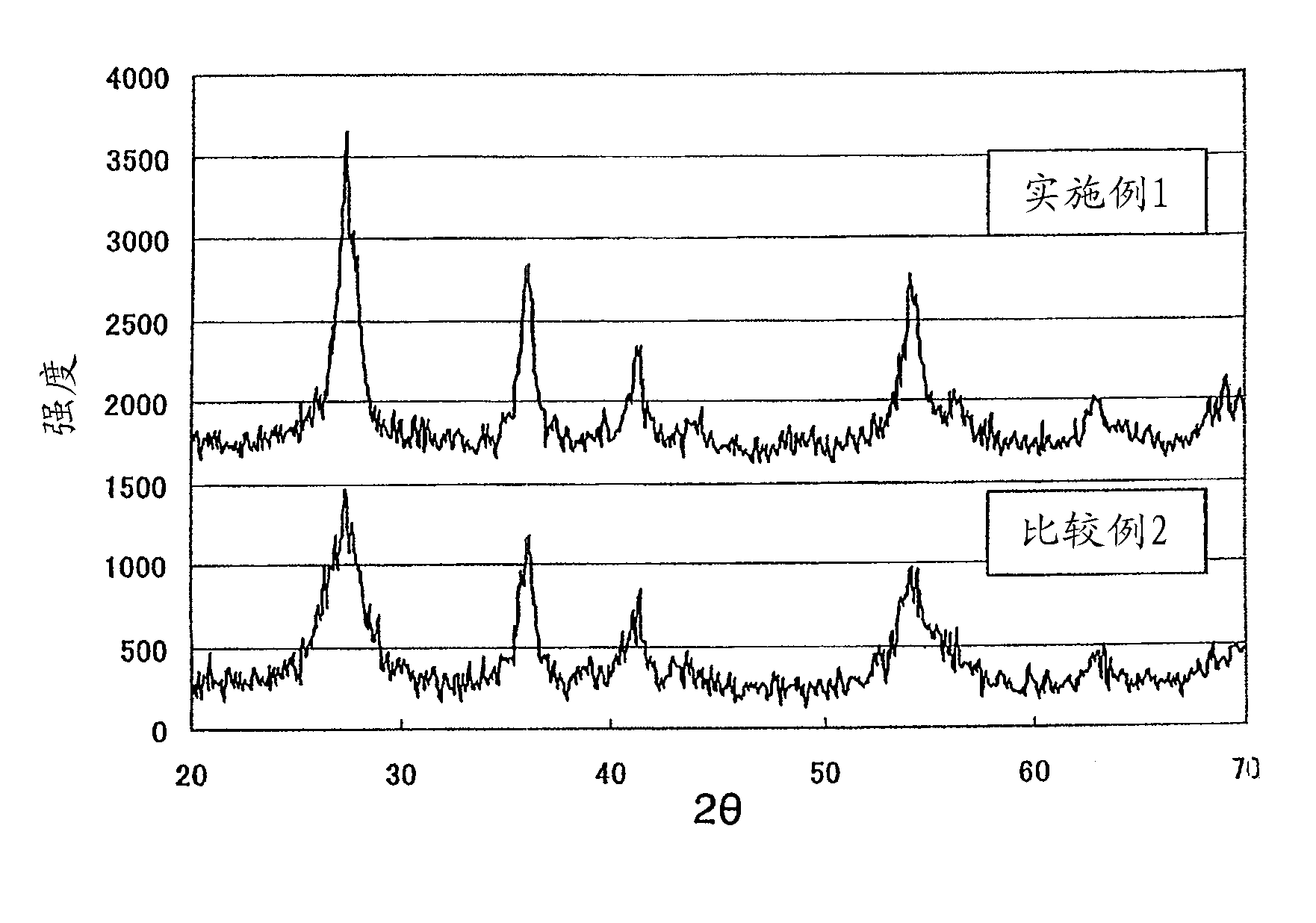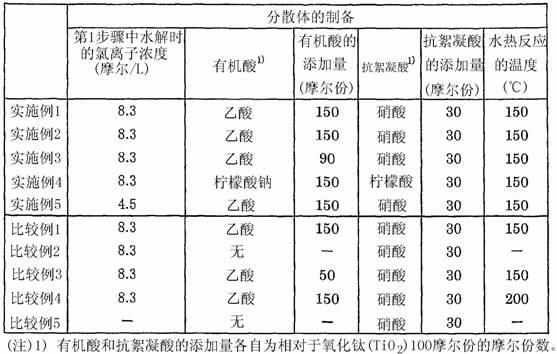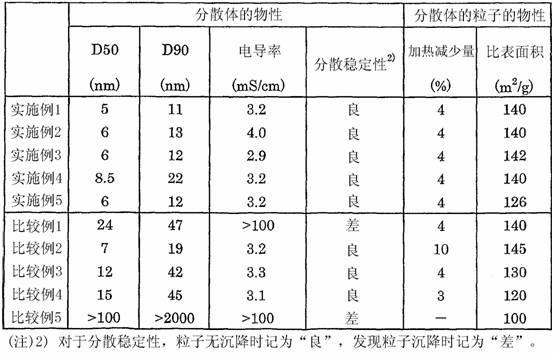Dispersion of rutile titanium oxide particles, method for producing same and use of same
A rutile type, titanium oxide technology, applied in the direction of titanium dioxide, chemical instruments and methods, titanium oxide/hydroxide, etc., can solve problems such as inability to improve crystallinity, achieve effective UV shielding, excellent dispersion stability, and high refraction rate effect
- Summary
- Abstract
- Description
- Claims
- Application Information
AI Technical Summary
Problems solved by technology
Method used
Image
Examples
Embodiment 1
[0068] Step 1
[0069] The aqueous solution of titanium tetrachloride was diluted with water and adjusted so that it was 200 g / L as titanium oxide and the chloride ion concentration was 8.3 mol / L. 1 L of the titanium tetrachloride aqueous solution was charged into a separable flask equipped with a reflux device, heated at the boiling point (110° C.) for 2 hours, and hydrolyzed to obtain a slurry containing precipitated rutile-type titanium oxide particles.
[0070] Step 2
[0071]The slurry was filtered using a glass fiber filter paper with a collection diameter of 300 nm to remove unreacted titanium tetrachloride and dissolved components. The rutile-type titanium oxide particles thus obtained were made into a slurry in water, and an aqueous sodium hydroxide solution was added to the obtained slurry until the slurry had a pH of 7.0, and then filtered using a glass fiber filter paper with a collection diameter of 300 nm. At this time, the rutile-type titanium oxide was slurri...
Embodiment 2
[0082] In the fifth step of Example 1, a dispersion of rutile-type titanium oxide particles was obtained in the same manner as in Example 1 except that hydrochloric acid was used instead of nitric acid for deflocculation.
Embodiment 3
[0084] In the third step of Example 1, a dispersion of rutile-type titanium oxide particles was obtained in the same manner as in Example 1 except that 90 mol parts of acetic acid was added to 100 mol parts of titanium oxide.
PUM
| Property | Measurement | Unit |
|---|---|---|
| particle diameter | aaaaa | aaaaa |
| specific surface area | aaaaa | aaaaa |
| electrical conductivity | aaaaa | aaaaa |
Abstract
Description
Claims
Application Information
 Login to View More
Login to View More - R&D
- Intellectual Property
- Life Sciences
- Materials
- Tech Scout
- Unparalleled Data Quality
- Higher Quality Content
- 60% Fewer Hallucinations
Browse by: Latest US Patents, China's latest patents, Technical Efficacy Thesaurus, Application Domain, Technology Topic, Popular Technical Reports.
© 2025 PatSnap. All rights reserved.Legal|Privacy policy|Modern Slavery Act Transparency Statement|Sitemap|About US| Contact US: help@patsnap.com



